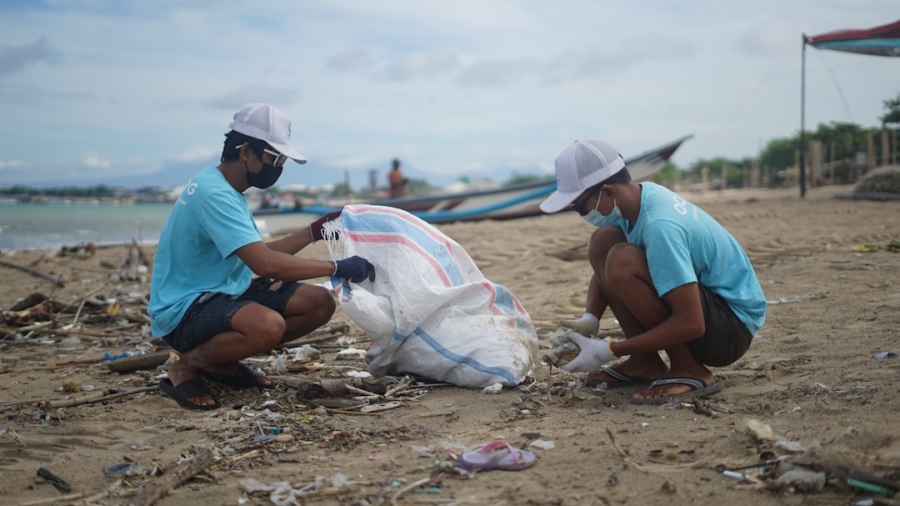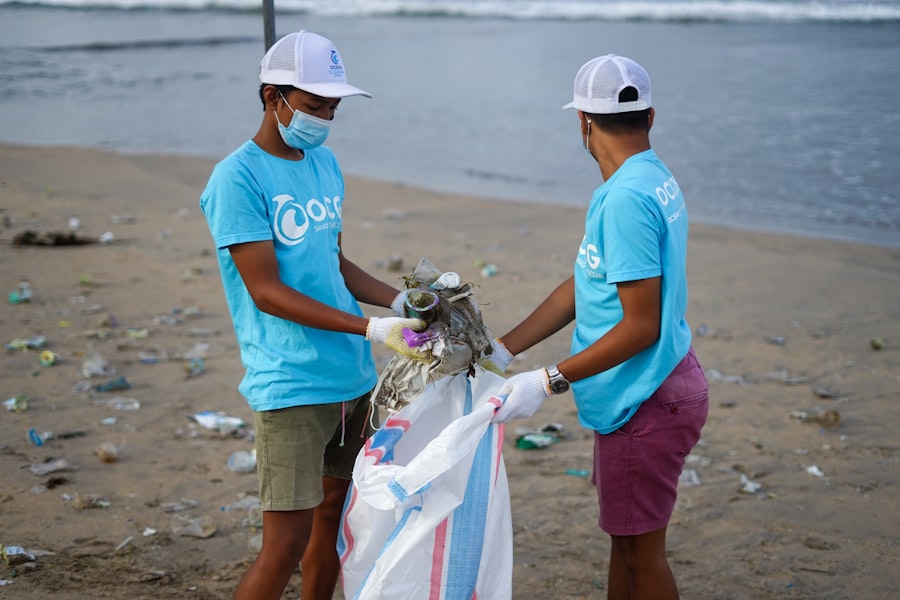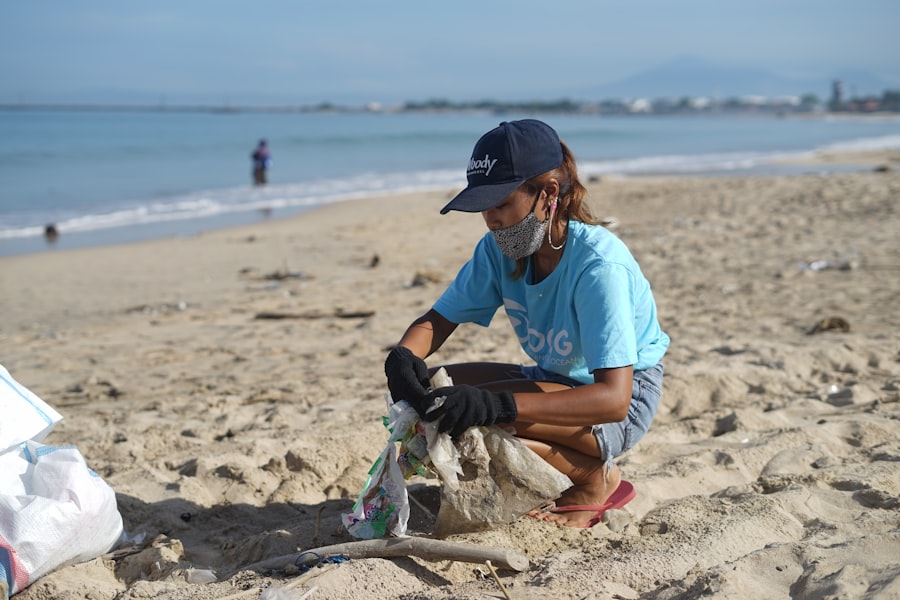Plastic pollution has emerged as one of the most pressing environmental challenges of our time, affecting ecosystems, wildlife, and human health on a global scale. The proliferation of plastic products, which began in the mid-20th century, has led to an overwhelming accumulation of plastic waste in landfills, oceans, and natural habitats. With an estimated 300 million tons of plastic produced annually, a significant portion of this material ends up in the environment, where it can take hundreds of years to decompose.
This persistent presence of plastic not only disrupts natural processes but also poses severe risks to biodiversity and the overall health of our planet. The consequences of plastic pollution are far-reaching and multifaceted. Marine life is particularly vulnerable, as millions of animals ingest or become entangled in plastic debris each year.
This not only leads to suffering and death for countless species but also disrupts entire ecosystems. Furthermore, microplastics—tiny plastic particles that result from the breakdown of larger plastic items—have infiltrated food chains, raising concerns about their impact on human health. As awareness of these issues grows, it becomes increasingly clear that addressing plastic pollution requires a concerted effort from individuals, governments, and industries alike.
Key Takeaways
- Plastic pollution is a growing environmental concern with significant impacts on ecosystems and human health.
- Plastic pollution has detrimental effects on marine life, wildlife, and the overall health of the environment.
- Efforts to reduce plastic pollution include policy changes, bans on single-use plastics, and increased recycling initiatives.
- Technological solutions for plastic pollution include the development of biodegradable plastics and innovative recycling technologies.
- Innovative recycling technologies and biodegradable alternatives offer promising solutions to reduce plastic pollution and its impact on the environment.
The Impact of Plastic Pollution on the Environment
The Devastating Effects of Plastic Pollution on Ecosystems
The environmental impact of plastic pollution is profound and far-reaching, affecting both terrestrial and aquatic ecosystems. In marine environments, plastic waste can be found in even the most remote areas of the ocean, from the surface waters to the deepest trenches. Large pieces of plastic debris can cause physical harm to marine animals, while smaller fragments can be ingested by fish and other organisms, leading to toxic accumulation in the food web.
Threats to Marine Biodiversity and Human Health
This bioaccumulation poses a significant threat not only to marine biodiversity but also to human populations that rely on seafood as a primary source of protein. The ingestion of microplastics by marine life raises alarming questions about the safety of our food supply and the potential health risks associated with consuming contaminated seafood.
The Impact of Plastic Pollution on Land and Water
On land, plastic pollution contributes to soil degradation and water contamination. When plastics break down into smaller particles, they can leach harmful chemicals into the soil and waterways, disrupting local ecosystems and harming plant and animal life. Additionally, plastic waste often clogs drainage systems, leading to increased flooding and erosion during heavy rains. The visual impact of plastic pollution is also significant; littered landscapes detract from natural beauty and can diminish property values in affected areas.
The Far-Reaching Consequences of Plastic Pollution
As communities grapple with these challenges, it becomes evident that the consequences of plastic pollution extend beyond environmental degradation—they also have economic and social implications that must be addressed.
Current Efforts to Reduce Plastic Pollution
In response to the growing crisis of plastic pollution, various initiatives have been launched at local, national, and international levels aimed at reducing plastic waste and promoting sustainable practices. Governments around the world are implementing policies such as bans on single-use plastics, incentives for recycling programs, and regulations on plastic production. For instance, countries like France and Canada have taken significant steps to phase out single-use plastic bags and straws, encouraging consumers to adopt more sustainable alternatives.
These legislative measures are often accompanied by public awareness campaigns designed to educate citizens about the importance of reducing plastic consumption and adopting eco-friendly habits. In addition to government action, numerous non-profit organizations and grassroots movements are working tirelessly to combat plastic pollution. These groups engage in beach cleanups, advocacy efforts, and educational programs aimed at raising awareness about the detrimental effects of plastic waste on the environment.
Collaborations between businesses and environmental organizations are also becoming more common, as companies seek to improve their sustainability practices and reduce their reliance on plastic packaging. By fostering a culture of responsibility and encouraging collective action, these efforts are crucial in driving meaningful change toward a more sustainable future.
Tech Solutions for Plastic Pollution
Technological innovation plays a pivotal role in addressing the challenges posed by plastic pollution. Researchers and entrepreneurs are developing cutting-edge solutions that aim to reduce plastic waste at various stages of its lifecycle—from production to disposal. One promising area of focus is the development of advanced materials that can serve as alternatives to traditional plastics.
Bioplastics made from renewable resources such as cornstarch or sugarcane are gaining traction as more sustainable options for packaging and consumer products. These materials not only reduce reliance on fossil fuels but also offer the potential for biodegradability under certain conditions. Moreover, technology is being harnessed to improve recycling processes and increase efficiency in waste management systems.
Innovations such as automated sorting systems equipped with artificial intelligence can enhance recycling rates by accurately identifying and separating different types of plastics. Additionally, advancements in chemical recycling technologies allow for the breakdown of plastics into their original monomers, enabling them to be reused in new products without compromising quality. By leveraging technology in these ways, we can create a more circular economy that minimizes waste and maximizes resource efficiency.
Innovative Recycling Technologies
Recycling technologies have evolved significantly over the past few decades, offering new avenues for managing plastic waste more effectively. Traditional mechanical recycling methods often face limitations due to contamination and degradation of materials over time. However, innovative approaches such as chemical recycling are emerging as viable alternatives that can address these challenges.
Chemical recycling involves breaking down plastics into their fundamental building blocks through processes like pyrolysis or depolymerization. This method allows for a broader range of plastics to be recycled, including those that are typically non-recyclable through conventional means. Another exciting development in recycling technology is the use of enzymes to break down plastics at a molecular level.
Researchers have discovered specific enzymes capable of degrading polyethylene terephthalate (PET), a common plastic used in bottles and containers. By harnessing these enzymes in industrial applications, it may be possible to create a more efficient recycling process that reduces reliance on virgin materials while minimizing environmental impact. As these innovative recycling technologies continue to advance, they hold great promise for transforming how we manage plastic waste and fostering a more sustainable future.
Biodegradable and Compostable Alternatives
Understanding Biodegradable Plastics
Biodegradable plastics are designed to break down more quickly than traditional plastics when exposed to natural environmental conditions. They can be derived from renewable resources such as plant starches or polylactic acid (PLA), making them a more sustainable option.
The Benefits of Compostable Materials
Compostable materials take the concept of biodegradable plastics a step further by breaking down into organic matter that can enrich soil without leaving harmful residues behind. Products made from compostable materials are increasingly being adopted in food packaging and disposable utensils as businesses seek to reduce their environmental footprint.
Importance of Consumer Education
However, it is crucial to educate consumers on the correct disposal of compostable products. Compostable items should not be mixed with regular waste but instead sent to appropriate composting facilities. By embracing biodegradable and compostable alternatives and disposing of them correctly, we can significantly reduce our reliance on conventional plastics while promoting a more sustainable approach to consumption.
Ocean Cleanup Technologies
The oceans are among the most affected by plastic pollution, with millions of tons of debris entering marine environments each year. In response to this crisis, innovative ocean cleanup technologies have been developed to address the accumulation of plastic waste in our seas. One notable initiative is The Ocean Cleanup project, which employs advanced systems designed to collect floating debris from the ocean’s surface.
Utilizing passive collection methods that harness natural ocean currents, these systems aim to remove large quantities of plastic while minimizing disruption to marine life. In addition to large-scale cleanup efforts, researchers are exploring various technologies for removing microplastics from ocean waters. Filtration systems equipped with specialized membranes or nets can capture tiny particles while allowing marine organisms to pass through unharmed.
These technologies not only help clean up existing pollution but also contribute valuable data on the distribution and composition of microplastics in marine environments. By combining cleanup efforts with research initiatives, we can gain a better understanding of the challenges posed by plastic pollution while working toward effective solutions.
The Role of Consumer Behavior in Reducing Plastic Pollution
While technological advancements and policy initiatives are essential components in combating plastic pollution, individual consumer behavior plays a critical role in driving change at a grassroots level. The choices we make as consumers—ranging from our purchasing habits to our disposal practices—can significantly impact the amount of plastic waste generated each year. By opting for reusable products over single-use items, supporting businesses that prioritize sustainability, and actively participating in recycling programs, individuals can contribute to reducing their plastic footprint.
Moreover, raising awareness about the consequences of plastic pollution is vital for fostering a culture of responsibility among consumers. Educational campaigns that highlight the importance of reducing plastic consumption can empower individuals to make informed choices that align with environmental sustainability goals. Social media platforms have become powerful tools for spreading awareness and mobilizing communities around this issue; grassroots movements often gain momentum through online engagement and advocacy efforts.
Ultimately, by collectively shifting our behaviors toward more sustainable practices, we can create a significant impact in the fight against plastic pollution and pave the way for a cleaner planet for future generations.
If you’re interested in exploring innovative tech solutions for reducing plastic pollution, you might find the article on the best software for 3D printing particularly enlightening. 3D printing technology holds significant potential in minimizing waste by enabling precise material usage and promoting the use of alternative, biodegradable materials. To learn more about how software can enhance these processes and contribute to environmental sustainability, check out the detailed review at Best Software for 3D Printing. This resource provides insights into how cutting-edge software can optimize 3D printing operations, potentially reducing the reliance on traditional plastics.
FAQs
What is plastic pollution?
Plastic pollution refers to the accumulation of plastic products in the environment that have a negative impact on wildlife, natural habitats, and human health.
How does plastic pollution affect the environment?
Plastic pollution can harm wildlife through ingestion and entanglement, disrupt ecosystems, and contribute to the degradation of natural habitats. It can also leach harmful chemicals into the soil and water.
What are some tech solutions for reducing plastic pollution?
Tech solutions for reducing plastic pollution include the development of biodegradable plastics, recycling technologies, waste management systems, and innovative packaging designs.
How can biodegradable plastics help reduce plastic pollution?
Biodegradable plastics are designed to break down into natural components over time, reducing their impact on the environment. They can help reduce the accumulation of plastic waste in landfills and natural habitats.
What role does recycling technology play in reducing plastic pollution?
Recycling technology allows for the collection, sorting, and processing of plastic waste into new products, reducing the need for virgin plastic production and minimizing the amount of plastic that ends up in the environment.
How can waste management systems contribute to reducing plastic pollution?
Effective waste management systems can help prevent plastic waste from entering the environment by promoting proper disposal and recycling practices. They also play a crucial role in reducing the amount of plastic that ends up in landfills and oceans.
What are some examples of innovative packaging designs that can help reduce plastic pollution?
Innovative packaging designs, such as compostable packaging and reusable containers, can help reduce the use of single-use plastics and minimize the amount of plastic waste generated by consumer products.



